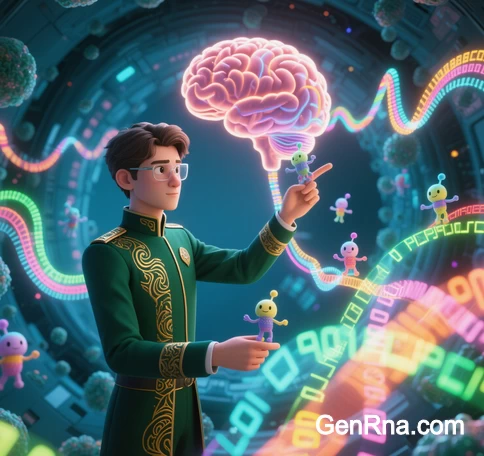 Emerging Directions in Brain-Computer Interface User Profiling and Applications
Emerging Directions in Brain-Computer Interface User Profiling and Applications
1. Introduction
BCI (Brain-Computer Interface) personas—user-specific neural profiles derived from brain activity, behavioral data, and machine learning—are poised to revolutionize healthcare, human-computer interaction, and cognitive augmentation. As neurotechnology advances, BCI personas will evolve from static diagnostic tools to dynamic, adaptive systems that anticipate user needs, optimize interventions, and integrate seamlessly into daily life. This article explores key trends shaping the future of BCI personas, from AI-driven neural decoding to ethical frameworks for neuroprivacy.
2. Technical Advancements Driving BCI Personas
A. Non-Invasive, High-Resolution Sensing
Emerging technologies like graphene-based EEG sensors and quantum optically pumped magnetometers (OPMs) will enable non-invasive BCIs to achieve spatial resolution rivaling invasive implants. These systems will map neural oscillations (e.g., gamma rhythms) with submillimeter precision, refining persona accuracy for applications in education (attention monitoring) and workplace safety (fatigue detection).
Suggested Figure: Next-gen EEG headset with graphene electrodes and real-time neural feedback display.
B. AI-Enhanced Signal Interpretation
- Generative AI Models: Neural networks trained on petabytes of neuroimaging data will predict user intent from sparse neural signals, enabling personas to adapt to individual neuroplasticity patterns. For example, stroke rehabilitation personas will dynamically adjust motor imagery thresholds based on daily recovery progress.
- Federated Learning: Privacy-preserving AI frameworks will allow BCIs to refine personas using decentralized data, addressing variability across demographics (e.g., pediatric vs. geriatric neural signatures).
C. Closed-Loop Neuromodulation
Future BCI personas will integrate real-time brain stimulation (tDCS, focused ultrasound) to enhance learning or suppress maladaptive patterns. For instance, personas for ADHD patients may trigger dorsolateral prefrontal cortex stimulation when detecting attentional lapses.
3. Expansion into New Application Domains
A. Mainstream Healthcare
- Precision Neurorehabilitation: Personas will guide individualized regimens for spinal cord injury and ALS patients, combining exoskeleton control, FES, and emotional state decoding (e.g., modulating therapy intensity based on frustration levels).
- Early Neurodegenerative Diagnosis: Machine learning-driven personas will detect Alzheimer’s biomarkers (e.g., aberrant beta-amyloid EEG patterns) decades before symptom onset.
Suggested Figure: BCI persona dashboard for ALS patients: communication, environmental control, and mood tracking.
B. Education and Workforce Optimization
- Cognitive Augmentation: Personas will monitor students’ focus and memory retention, recommending personalized learning pathways. Neurotech startups are already piloting BCI-integrated VR classrooms that adapt content delivery based on theta/alpha wave ratios.
- Neuroergonomics: Workplace BCIs will optimize productivity by adjusting lighting, task complexity, or break schedules in response to neural fatigue signals. Pilot projects in manufacturing and aviation are underway.
C. Consumer Electronics and Entertainment
- Affective Gaming: Personas will enable games that adapt narratives based on players’ emotional states (e.g., increasing challenge when detecting boredom via gamma oscillations). Companies like Emotiv are prototyping BCI-integrated VR headsets.
- Mind-Controlled Smart Homes: Personalized BCIs will allow users to adjust thermostats, lighting, or music playlists through imagined commands, with startups like NextMind (acquired by Snap) leading development.
4. Ethical and Societal Implications
A. Neuroprivacy and Data Sovereignty
As BCI personas aggregate intimate neural data, encryption standards akin to quantum-resistant blockchain will be critical to prevent misuse. Regulatory frameworks like the EU’s proposed “Neurorights Charter” aim to classify neural data as inviolable personal property.
B. Equity and Accessibility
While high-end BCIs may initially benefit affluent users, innovations like low-cost dry EEG sensors and government subsidies (e.g., China’s “14th Five-Year Plan” for neurotech) aim to democratize access. Open-source platforms like OpenBCI are accelerating this shift.
C. Identity and Agency
Debates will intensify over BCIs that modify cognition or memory. For example, personas designed to suppress traumatic recollections via hippocampal stimulation could challenge notions of authenticity and informed consent.
5. Market Trajectory and Industry Collaboration
The global BCI market, projected to reach $45 billion by 2029, will be shaped by:
- Healthcare Dominance: Medical applications (neurorehabilitation, epilepsy management) will account for 60% of revenue, driven by aging populations and rising neurodegenerative disease prevalence.
- Cross-Industry Synergies: Partnerships like Neuralink x Apple (integrating BCIs into wearables) and Synchron x Pfizer (BCI-based drug delivery monitoring) will blur traditional sector boundaries.
- Regulatory Harmonization: Global standards for BCI safety and efficacy, modeled on the FDA’s “Breakthrough Device Designation,” will emerge to accelerate clinical adoption.
Suggested Figure: Projected BCI market segmentation (2029): Healthcare, Consumer Tech, Industrial.
6. Frontier Innovations on the Horizon
A. Neuro-Nanobots
Injectable nanobots capable of real-time neural recording/stimulation will enable ultra-precise personas. Early research at MIT explores diamondoid nanobots for mapping dopaminergic pathways in Parkinson’s patients.
B. Conscious Cloud Integration
Theoretical frameworks propose “neuro-cloud personas” where users contribute neural data to collective intelligence platforms. These systems, secured via neuromorphic blockchain, could tackle complex problems (e.g., climate modeling) by harnessing distributed cognitive resources.
C. Symbiotic AI-Brain Networks
BCIs will evolve into bidirectional interfaces where AI agents co-process information with biological neural networks. DARPA’s N3 program is prototyping systems that allow soldiers to control drones via subconscious intent.
Data Source: Publicly available references.
Contact: chuanchuan810@gmail.com
